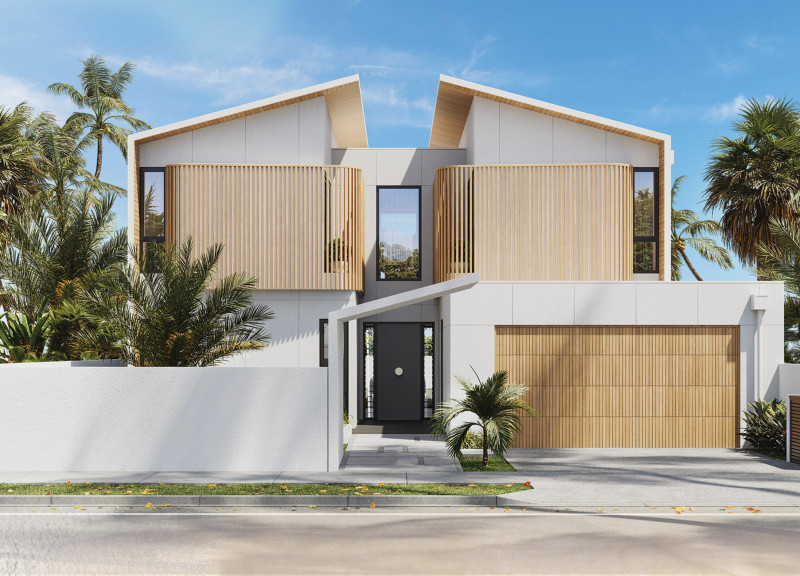5 key facts about this project
The primary function of the project is [insert primary function, e.g., residential, commercial, mixed-use], designed to accommodate [explain the users or activities, such as families, professionals, or community events]. This functional clarity drives the layout, ensuring that each area serves a specific purpose while maintaining an overall harmonious flow. The careful arrangement of spaces enables efficient use, allowing for easy movement and interaction among users.
Upon examining the architectural details, one notes the thoughtful selection of materials that lend character to the project. Concrete serves as a strong foundation, ensuring durability and structural integrity, while expansive glass elements enhance transparency and connection to the environment. The use of wood introduces warmth, softening the overall aesthetic and creating a more inviting atmosphere. Steel framing complements the design, providing support without compromising visual simplicity. Natural stone enhances the façade, grounding the structure by incorporating elements of the local landscape.
This project emphasizes its unique design approach through its adaptive layout and innovative spatial configurations. The interiors are designed with flexibility in mind, allowing different uses over time, which is increasingly vital in contemporary architecture. By incorporating areas such as [mention specific features like communal spaces, private workstations, or hybrid rooms], the design accommodates diverse activities. This flexibility fosters an environment where community interaction is encouraged, whether through informal gatherings or organized events.
Sustainability is a cornerstone of this architectural design. The incorporation of energy-efficient systems, such as solar panels and rainwater harvesting mechanisms, showcases a commitment to reducing ecological footprints. Furthermore, the integration of green roofs and landscaped areas promotes biodiversity and enhances the overall aesthetic of the environment, creating not just a building, but a thriving ecosystem. These elements highlight a proactive approach to environmental responsibility, aligning with the growing imperative for architecture to embrace sustainability in its practices.
The design also reflects a deep consideration for the local climate and context. Shading devices and strategic orientation minimize solar gain, optimizing energy efficiency and comfort within the spaces. Large windows and open-air terraces encourage natural ventilation, reducing reliance on mechanical systems and fostering a healthier indoor environment. By understanding and responding to the geographical conditions, the architecture remains in harmony with its surroundings.
In addition to its environmental and functional attributes, the project stands out for its aesthetic coherence and attention to detail. Each architectural element is purposeful, contributing to a unified design language that is both modern and timeless. The interplay of materials, textures, and light creates dynamic spaces that evolve throughout the day, providing varying experiences for its users. This attention to architectural detail manifests in various features, such as custom-built furniture and thoughtfully designed lighting, which enhance usability and aesthetic appeal.
For those interested in exploring architectural plans, sections, and designs, a comprehensive presentation is available that delves deeper into the specifics of this project. An examination of architectural ideas employed in the design will reveal how these elements combine to create a vibrant and functional space. By engaging with the project’s visual and spatial narrative, one can gain a greater appreciation for the careful thought that has shaped this architectural endeavor. Explore the project further to uncover the full extent of its innovative design and compelling architectural solutions.


 Peter Charles Searle
Peter Charles Searle 























